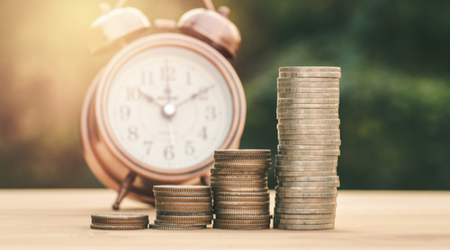Beginners Education: Why Invest?
Why invest?
“Compound interest is the 8th wonder of the world. He who understands it, earns it; he who doesn’t, pays it” – Albert Einstein.
“Money makes money, and the money money makes, makes more money” – Benjamin Franklin.

Why should we be investing our money? Seems a simple question that should have a simple answer. And when you remove personal circumstances, financial positions and all the other noise around investing there is a simple answer. Compounding returns.
Compounding returns are basically what happens when you continue to reinvest your investment returns over a period of time, essentially producing profits on your profits. It is your cumulative return.
To show the power of compounding returns let’s have a look at the different outcomes from a $10,000 investment with four different investment options; tucked under the bed at 0% p/a, invested at 3% p/a, invested at 6% p/a and invested at 12% p/a.
.png)
As can be seen from the table, the difference in outcomes between the various investment returns is significant. While the money under your bed is doing nothing for you, still worth only $10,000 after 25 years, the money invested is providing great returns. Looking at a reasonably achievable return of 6% p/a we see our figure at $16,908 after 10 years and $42,919 after 25 years, and if you were able to produce a 12% compounding return with the same investment amounts return $31,058 after 10 years and a massive $170,001 after 25 years. Compared to the money sitting under your bed after 25 years you’ll be $22,919 better off invested at 6% and $160,001 better off if you can somehow manage a 12% return each year for 25 years.
Obviously it’s all easier said than done. There is a large level of risk involved in the real-life process and these calculations don’t take into account inflation. But you get the point. There is some serious power in compounding returns. It’s no wonder Einstein labelled it the 8th wonder of the world.
Now you know the power of compounding returns you can use them to your advantage.
One way to get an idea of your investment timelines is to use The Rule of 72.
The rule of 72 is an easy way to estimate the number of years it will take to double your money at a given annual rate of return, using the following formula:
Years to Double = 72% / return %
So, say you have 50,000, you want to turn it into 100,000 and you think you can comfortably produce a 6% return. The equation would look like this: Years to Double = 72 / 6(%) = 12, showing you it would take 12 years to double your $50,000. If you wanted to turn the $50,000 in to $200,000 it would take 24 years, as we know it would take 12 years to double the $50,000, and another 12 years to double the $100,000.
This is helpful, but unfortunately only works with doubling figures, so if you have a specific target in mind, it won’t be quite as handy.
If you know your retirement figure - the amount of money that lets you stop working and live comfortably for the rest of your days - along with when you would like to retire, and the amount you can invest now, you can reverse engineer (with a lot of complicated formulas and trial and error) the return required to reach that value at that time.
Luckily, rather than go through the complex calculations we have created the MT Compound Returns Calculator to help you understand what return you need year on year to achieve your investment goals.
All you need to do is enter your ‘Starting Value’ (the dollar amount you can invest now), your ‘End Value’ (your retirement figure) and the ‘Years To Achieve’ this objective, and our calculator will show you the per annum return you need to obtain your goal.